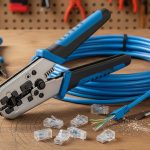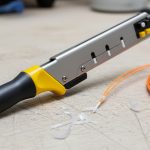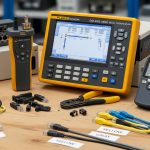In today’s interconnected world, an unexpected power outage can be more than just an inconvenience—it can disrupt work, spoil food, and compromise safety. From severe weather to utility grid failures, losing electricity for an extended period is a growing concern for many homeowners. This is why investing in a reliable home generator has moved from a luxury to a virtual necessity. However, the market is flooded with options, making the selection process complex. How do you choose the right generator that will meet your unique needs without overspending or under-powering your home?
This comprehensive guide will walk you through every critical factor in selecting a generator for your home. We’ll explore the different types of generators, calculate your power requirements, analyze fuel options, and cover essential safety considerations. By the end, you will have a clear, actionable plan to make an informed decision and ensure your family remains comfortable and secure when the lights go out.
Understanding the Different Types of Home Generators
The first step in selecting the right unit is understanding the primary categories of generators available for residential use. Each type offers distinct advantages and disadvantages concerning power output, convenience, cost, and installation. Let’s delve into the three main contenders.
1. Standby (Whole-House) Generators
A standby generator is a permanently installed unit that resembles a small air conditioning unit outside your home. It’s connected directly to your home’s electrical panel via an automatic transfer switch (ATS). When utility power is lost, the ATS senses the outage, signals the generator to start, and automatically transfers the electrical load to the generator. Standby generators are the ultimate hands-off solution for homeowners.
Pros:
- Automatic Operation: They start and stop automatically, offering seamless power restoration, even when you are away from home.
- High Power Capacity: Capable of powering your entire home, including central air conditioning, well pumps, and major appliances. (See: best whole house generators)
- Fuel Source: Typically run on natural gas or propane, allowing for extended run times without manual refueling.
- Safety: Permanently installed with a professional transfer switch, eliminating the risk of ‘backfeeding’ the power grid.
Cons:
- High Cost: Significant upfront cost for the unit and professional installation.
- Permitting: Requires permits, compliance with local codes, and utility company involvement.
- Maintenance: Requires professional, routine maintenance to ensure reliable operation.
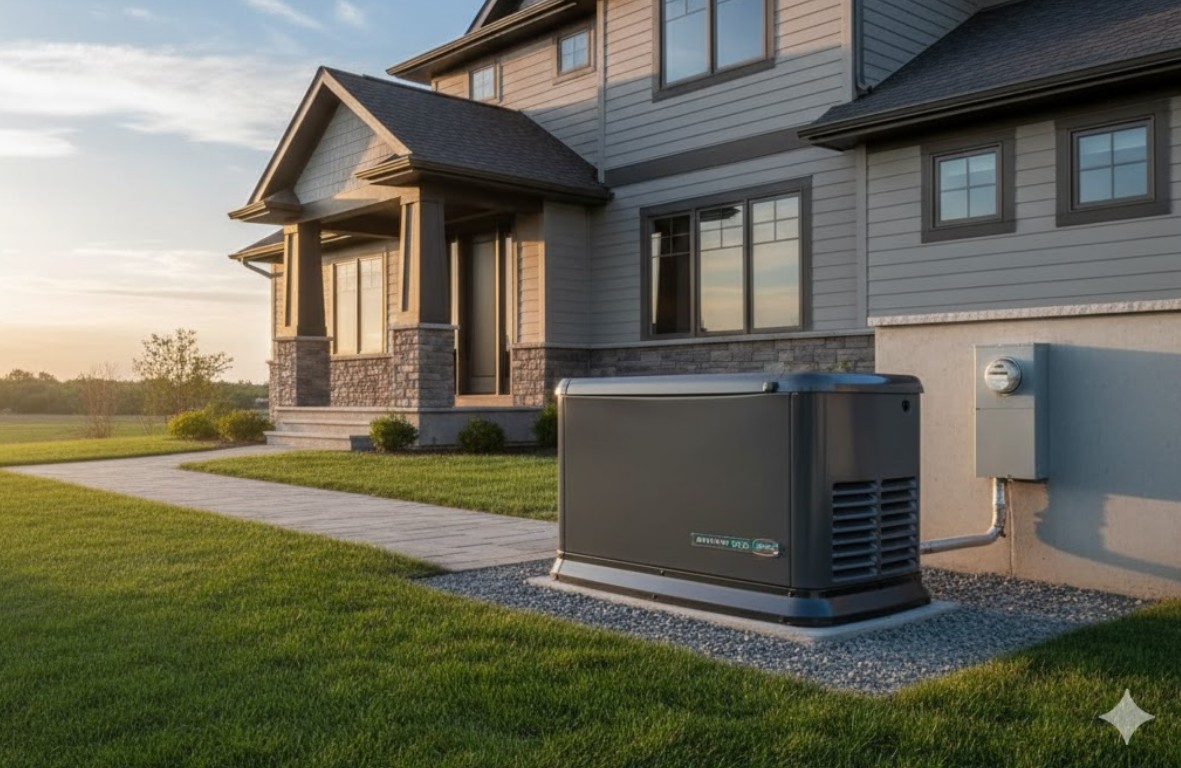
2. Portable Generators
Portable generators are the most common and budget-friendly option. They are designed to be moved easily and typically run on gasoline, though some models are dual-fuel (gasoline and propane). They require manual start-up and must be operated outdoors, away from windows and doors, and connected to appliances either directly or via a manual transfer switch.
Pros:
- Affordability: Much lower initial cost compared to standby units. (See: best portable home backup generators)
- Flexibility: Can be used for camping, tailgating, or worksites in addition to home backup.
- No Installation: No permanent installation required, just safe setup and operation.
Cons:
- Manual Operation: Requires manual start, stop, and refueling—often in adverse weather.
- Fuel Management: Requires storing and managing gasoline, which has a limited shelf life.
- Limited Power: Typically only enough to power a few essential circuits (e.g., refrigerator, lights, furnace fan).
- Noise: Generally louder than standby or inverter models.
3. Inverter Generators
Falling under the portable umbrella, inverter generators use advanced electronic circuitry and high-tech magnets to produce a cleaner, more stable sine wave of electricity than conventional generators. This “clean power” is crucial for safely running sensitive electronics like computers, smartphones, and certain modern appliances. They are highly fuel-efficient and quieter than standard portable generators.
Pros:
- Clean Power: Safe for all sensitive electronics. (See: best inverter generator for home backup)
- Quiet Operation: Much quieter than conventional portable models.
- Fuel Efficiency: Engine speed adjusts to meet the power demand, saving fuel.
- Portability: Often lighter and more compact.
Cons:
- Higher Cost: More expensive than conventional portable generators of similar wattage.
- Lower Output: Maximum power output is often less than the largest conventional portable or standby units, though parallel kits can link two units for more power.
Sizing Your Generator: The Critical Calculation
Selecting the correct size—measured in watts (W) or kilowatts (kW)—is arguably the most critical step. An undersized generator won’t run all your essential items, while an oversized one is a wasteful expense. To accurately determine your needs, you must account for two types of power consumption: running watts and starting watts.
Step 1: Identify Your Essential Appliances
First, decide what you absolutely must power during an outage. Are you aiming for a bare-bones setup (lights, refrigerator, furnace fan) or a whole-house solution (central air, electric range, water heater)? Make a comprehensive list.
Tip: If you live in an area with frequent, short outages, you might only need the essentials. If outages are rare but potentially last for days, you might want more comfort items.
Step 2: Calculate Running and Starting Watts
Every appliance has a label or nameplate that lists its voltage and amperage. You can use a simple formula to find the watts: Volts x Amps = Watts. If the watts are listed directly, even better. You must also determine the starting watts (or surge watts).
Appliances with electric motors—like refrigerators, air conditioners, well pumps, and furnace fans—require a momentary burst of extra power, typically 2 to 4 times their normal running watts, to start up. This is the starting wattage and it is what often trips up new buyers. While the surge only lasts for a second, your generator must be able to handle it.
Sample Wattage List (Approximate):
| Appliance | Running Watts (Approx.) | Starting Watts (Approx.) |
|---|---|---|
| Refrigerator/Freezer | 600 W | 1,800 W |
| Furnace Fan (Gas/Oil) | 700 W | 2,100 W |
| Sump Pump | 800 W | 1,200 W |
| Window AC (10,000 BTU) | 1,200 W | 2,400 W |
| Lights (LED) | 10 W per bulb | 10 W |
| Desktop Computer | 150 W | 150 W |
Step 3: Determine Your Total Wattage Needs
To find the minimum generator size you need, follow this simple calculation:
- Add up the running watts of all the essential items you plan to run simultaneously.
- Identify the single essential item on your list that has the highest starting watts.
- Add the total running watts (from step 1) to the single highest starting watts (from step 2).
This final number is your target peak wattage or starting wattage requirement. Your generator must have a maximum (or surge) wattage rating greater than this total. The generator’s rated (or continuous) wattage must be greater than your total running watts.
Example: Running a refrigerator (600W), furnace fan (700W), and a few lights (100W total).
Total Running Watts: 600+700+100=1,400 W.
Highest Starting Watts (Furnace Fan): 2,100 W.
Total Peak/Starting Watts: 1,400+2,100=3,500 W.
In this case, you would need a generator with a continuous/rated output of at least 1,400 W and a maximum/surge output of at least 3,500 W. Always round up and choose a generator that offers a 20-25% buffer for safety and future additions. A 4,000-watt portable generator would be a safe choice here.
Evaluating Generator Fuel Types
The type of fuel your generator uses directly impacts its run time, maintenance, convenience, and operating cost. The major choices are Natural Gas, Propane (LP), Gasoline, and Diesel.
Natural Gas (NG)
The preferred fuel for most home standby generators. Natural gas is piped directly to your house, eliminating the need for refueling.
- Pros: Virtually unlimited run time (as long as the gas line is functional), clean burning, no fuel storage required. (See: best natural gas home generators)
- Cons: Availability depends on having a city gas line; installation cost is higher to connect to the line; gas service could be interrupted during a major disaster.
Propane (LP)
Commonly used for standby generators and dual-fuel portables. Propane is stored in large, dedicated tanks on your property.
- Pros: Propane is readily storable and has an indefinite shelf life; it is typically available even if the natural gas grid is down.
- Cons: Requires a large, visible storage tank; fuel delivery is needed for extended outages; less energy-dense than gasoline or diesel.
Gasoline
The most common fuel for portable and inverter generators due to its wide availability.
- Pros: Easily accessible at any gas station.
- Cons: Requires manual and frequent refueling; a limited supply can be stored safely; Gasoline degrades relatively quickly (needs a stabilizer); it is a fire hazard.
Diesel
Primarily used for large commercial or very high-output residential generators. Diesel engines are known for their efficiency and long lifespan.
- Pros: Excellent fuel efficiency; Diesel is a less flammable fuel than gasoline; reliable and durable engines.
- Cons: Higher upfront cost for the unit; fuel can “gel” in extreme cold; requires proper storage and treatment.
Key Features and Considerations
Once you’ve decided on the type and size, several other features will differentiate one generator from another and directly impact your experience and the generator’s longevity.
Automatic vs. Manual Start
Automatic Start: Exclusively for standby generators via the Automatic Transfer Switch (ATS). This offers unparalleled convenience and is a lifesaver during outages while you’re away or sleeping.
Manual Start: For portable units. It can be a simple pull-cord or an electric start (push-button) with a battery. An electric start is significantly easier and highly recommended, especially for larger portable units.
Noise Level (Decibels)
Generators can be very loud, which can be a significant issue in residential areas or at night. Noise is measured in decibels (dB). For reference, normal conversation is about 60 dB, and a lawnmower is about 90 dB. Traditional portable generators can range from 70 to 80 dB.
- Standby Generators: Often run around 60-70 dB due to sound-dampening enclosures.
- Inverter Generators: These are the quietest, often running in the 50-60 dB range, making them ideal for close neighbors or camping.
Always check local ordinances for noise restrictions before installing or operating a generator.
Transfer Switch: Manual vs. Automatic
The transfer switch is the safest way to connect a generator to your home’s electrical system.
- Automatic Transfer Switch (ATS): Required for standby generators, it automatically disconnects your home from the utility grid and connects it to the generator, preventing dangerous backfeeding into power lines.
- Manual Transfer Switch (MTS): For portable generators, a professional electrician installs this switch into your panel. It allows you to safely switch between utility power and generator power with a physical lever, powering only selected circuits. This is a much safer alternative to running extension cords through windows or doors.
Run Time and Fuel Gauge
A generator’s run time specifies how long it can operate on a full tank or supply, usually at 50% load. For portable units, a longer run time is crucial, as you want to minimize middle-of-the-night refueling. Look for models with a clear, easy-to-read fuel gauge.
Advanced Technology and Safety Features
Modern generators come with features that enhance safety and ease of use:
- Carbon Monoxide (CO) Shutoff: A mandatory safety feature on many new portable generators. It monitors CO levels and automatically shuts the engine off if CO gas builds up to dangerous levels.
- Low Oil Shutoff: Protects the engine by automatically turning the unit off when the oil level is critically low.
- Overload Protection: Circuit breakers that trip if you connect too many appliances, protecting the generator and your devices.
- Wireless Monitoring: Some standby units offer Wi-Fi connectivity to monitor the generator’s status, run time, and maintenance needs from a mobile app.
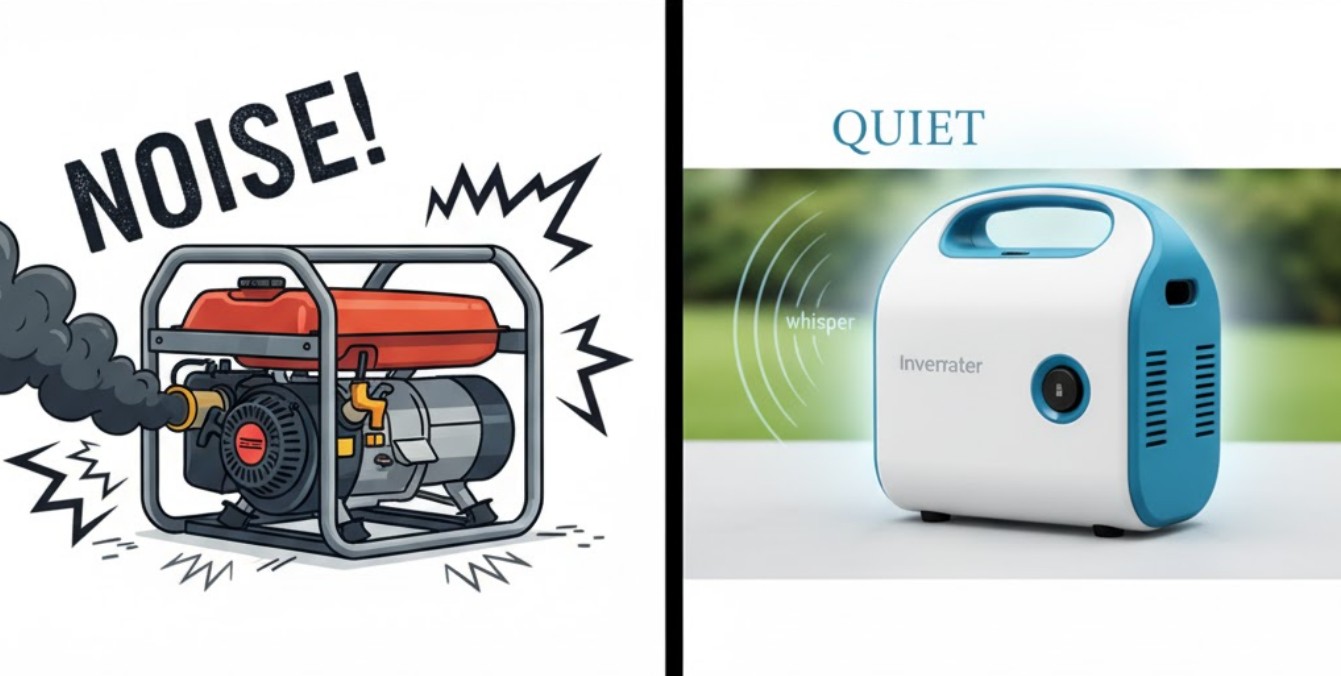
The Selection Process: Putting It All Together
To finalize your choice, ask yourself the following critical questions:
1. What is my primary goal? (Convenience vs. Cost)
- Goal: Total Convenience and Whole-House Power. Choose a Standby Generator. They are more expensive but require zero manual effort during an outage. They offer high power output and run on continuous fuel like natural gas or propane. (For top options: best home standby generators)
- Goal: Backup Essentials and Portability. Choose a Portable or Inverter Generator. These are budget-friendly, offer flexibility, and require manual operation and refueling.
2. What is my budget?
- Under $1,500: Likely a smaller, gasoline portable or inverter generator suitable for a few essential items.
- $1,500 – $4,000: A large, high-output portable or a quality, mid-size inverter generator, possibly with a manual transfer switch installation cost included.
- $5,000+: This is the starting range for a professionally installed standby generator (unit + installation).
3. What is the frequency and duration of my outages?
- Frequent, Long Outages: A standby generator with a natural gas connection or a large propane tank is the most practical solution for multi-day events.
- Infrequent, Short Outages: A reliable, mid-size portable generator is often sufficient, provided you have a steady supply of fresh fuel.
Safety and Installation: Crucial Last Steps
A generator is a powerful piece of equipment, and safety should always be the number one priority. Never compromise on proper installation and operation procedures.
Installation Requirements
For a standby generator, professional installation is mandatory. This involves:
- Siting: Placement must comply with local codes, often requiring a minimum distance from windows, doors, property lines, and combustible materials (typically 3 to 5 feet).
- Fuel Line: Connection to the natural gas line or propane tank.
- Electrical: Installation of the automatic transfer switch (ATS) by a licensed electrician.
For a portable generator, while direct installation is not required, connecting it to your home via a manual transfer switch (MTS) is highly recommended. This should always be done by a licensed electrician to avoid the fatal hazard of backfeeding.
Safe Operation of Portable Generators
Never run a generator indoors, in a garage, or even near an open window or door. Generators produce lethal, odorless, and colorless carbon monoxide (CO) gas. Position your generator at least 15-20 feet away from your home, ensuring the exhaust is directed away from all occupied spaces. Furthermore, always have working carbon monoxide alarms inside your home.
Also, never refuel a generator while it is running or hot. Shut it down and allow it to cool completely before adding fuel to prevent a dangerous fire.
Final Thoughts
Selecting the right home generator is an investment in your peace of mind and the safety of your family. It starts with a realistic assessment of your power needs, differentiating between essential running watts and peak starting watts. From there, the choice comes down to a trade-off between the ultimate convenience and high upfront cost of a standby generator versus the affordability and portability of an inverter or conventional portable generator.
No matter which option you choose, prioritize safety by ensuring proper ventilation and installation, particularly the use of a professional transfer switch to protect your home and utility workers. By following this detailed guide, you can confidently select a reliable backup power solution that will keep your life running smoothly, regardless of what the weather or the power grid throws your way.



![5 Best Radiator Case Fans for Liquid Cooling 2025 [140mm] 7 Best Radiator Case Fans for Liquid Cooling 2019 [140mm]](https://bestreviews.vip/wp-content/uploads/2019/06/Best-Radiator-Case-Fans-for-Liquid-Cooling-2019-140mm-150x150.jpg)

